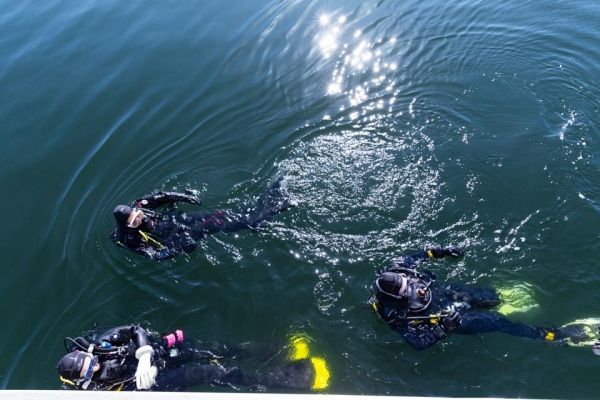When second-year biology student Emie Woodburn talks about the University of Victoria’s scientific diving program, she recalls a childhood reflex of pinching her nose under water to avoid flooding her nostrils. It’s a response she gladly unlearned during the program that practices safety protocols over and over again.
Repetition is a hallmark of the scientific diving program, which has given three decades of UVic students the tools and training they need to safely conduct research in the cool depths of the Salish Sea, Saanich Inlet and other waterways. Based on the standards of the Canadian Association of Underwater Sciences, the program is part on-land and open water classroom to train compliance in a highly regulated area, says Andy Mavretic, director of UVic’s Occupational Health, Safety & Environment unit, which oversees the diving program.
The program, which requires students to develop and lead detailed dive plans that set out dive duration, depth, potential risks and contingencies, provides students with the hands-on learning they need to safely and successfully conduct research under water.
“It’s like a laboratory under water so there are obvious risks,” says Mavretic. “We strive to make the training as real and relevant as possible for the students to help make their research happen.”
Woodburn’s dive plan focuses on recording biological life—ling cod, crabs, bull kelp—in Ogden Point, southwest of Victoria, and outlines project goal and research techniques to quantify relative abundance of organisms in an area. Beginner divers fixate on equipment, checking air, buoyancy, pace of ascent and descent, as well as search and rescue drills. Dive plans account for emergency procedures including minimizing thermal stress by wearing the right clothes and communicating during crisis.
Continue reading at University of Victoria.
Image via University of Victoria.


